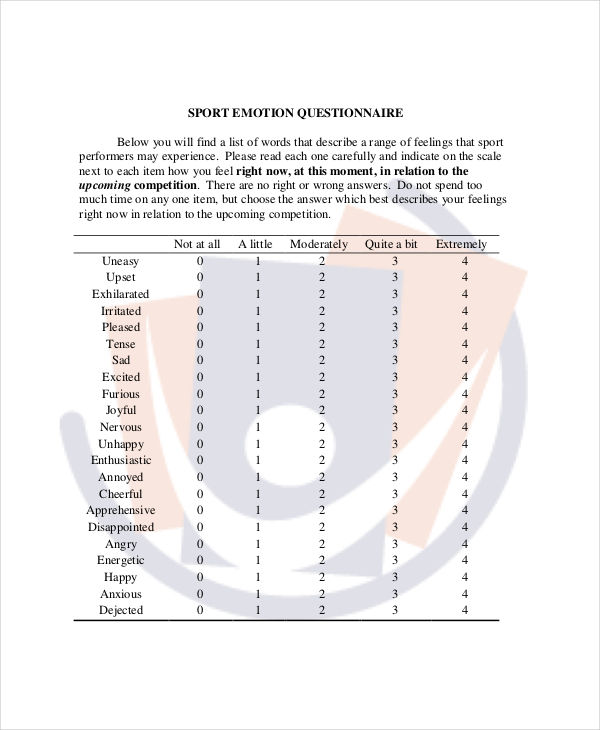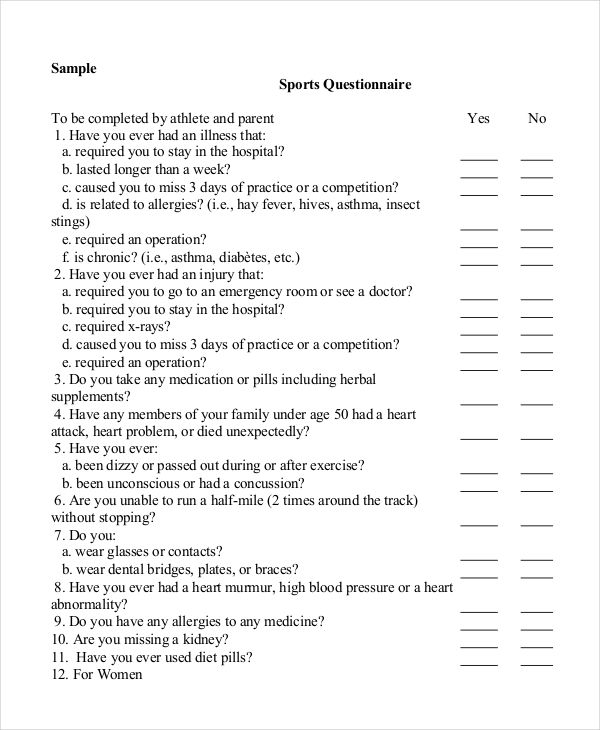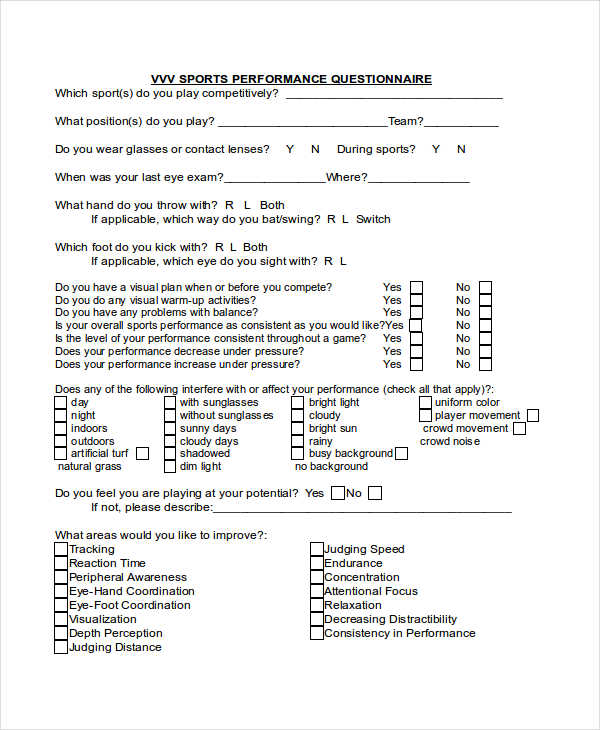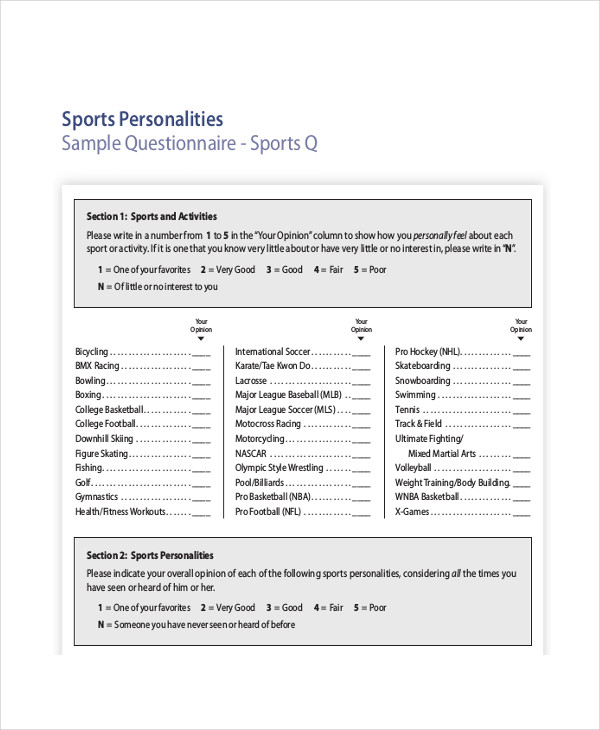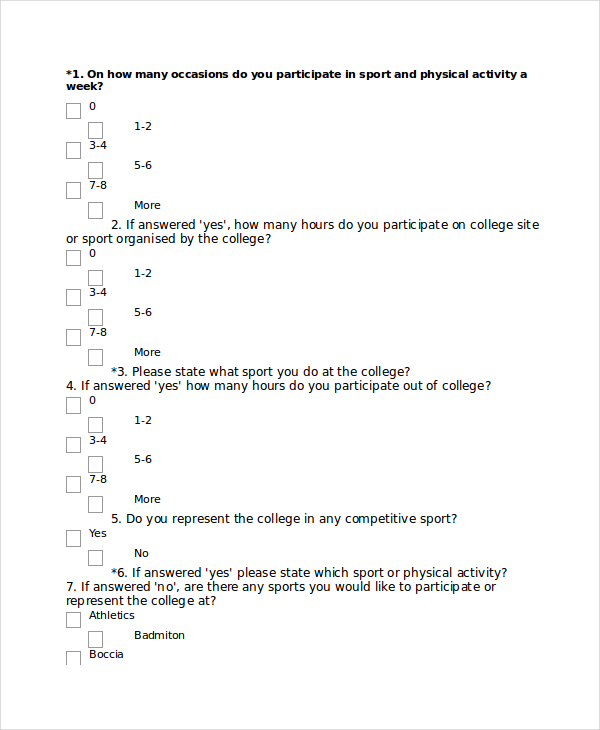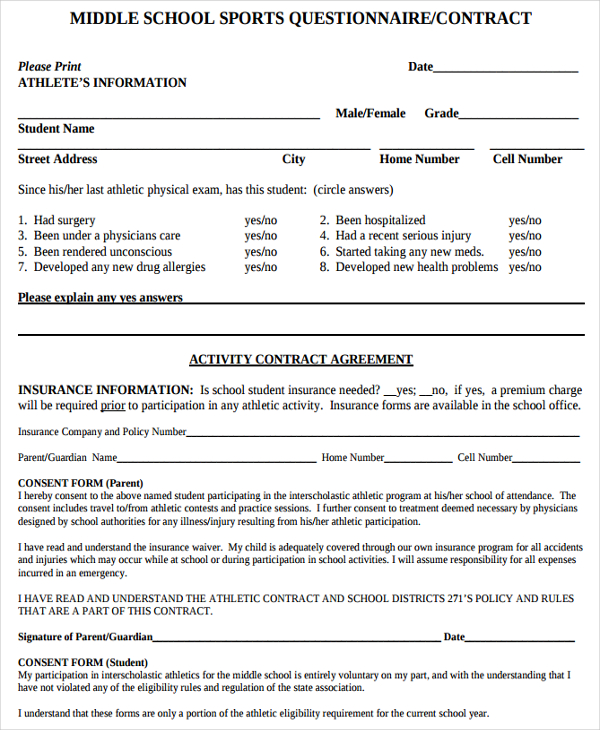6+ Sports Questionnaire Examples
We define questionnaires as printed or written questions created for a survey or a study. Common examples of questionnaires used to gain personal input include health questionnaires and lifestyle questionnaires. Questionnaires may also be used in the field of sports.
For instance, it may be used to evaluate the effectiveness of a given sports program that is offered. Whatever its purpose may be, the data gathered may be used to assess, develop, or improve a particular matter.
Sports Emotion Questionnaire
Sports Health Questionnaire
What Is a Sports Questionnaire?
A sports questionnaire, from the name given, is used to ask sports-related questions for a particular purpose. This is why it’s essential for respondents to provide honest information in order for the questionnaire to garner precise results for a given matter.
How to Make a Sports Questionnaire
In making a sports questionnaire, just like any other questionnaire, it’s important to specify your objectives first. This would be in terms of what you need, why you need it, and how you can attain it. You would also need to analyze your target respondents, this will help you craft the appropriate questions to ask.
You can also state the purpose of your questionnaire to allow respondents to be aware of what it’s all about. Be sure to provide the necessary instructions or reminders for questionnaires that may not be easily understood at first glance.
If you’re having trouble developing your questionnaire, you can always search for questionnaire examples that may serve as your basis. This will help you formulate the right questions to ask your respondents.
Sample Sports Questionnaire
Sports Performance Questionnaire
Personality Sports Questionnaire
College Sports Questionnaire
School Sports Questionnaire
Guidelines for a Sports Questionnaire
- Make it relevant. Concentrate on asking questions that relate to your defined objectives.
- Avoid crafting lengthy questions. Make your questions direct to the point. Otherwise, it may lose its central meaning.
- Allow ratings or options. Questions and tips that ask for ratings or provide choices garner more precise results. However, be sure to limit your choices for it to be easier to evaluate.
- Determine which questions should be asked first and last. It’s best to follow a specific order for your questionnaire, in which simple questions are asked first and serious questions are asked towards the end.
- Properly phrase your questions. This would mean that each question should consist of simple wording that may be understood by all. You don’t want to gain insufficient data just because your questions were difficult to comprehend.
Importance of a Sports Questionnaire
Each sports questionnaire is designed differently, depending on the information that you wish to obtain from a respondent.
For instance, some sports questionnaires are made to assess whether an individual is physically capable to take part in a given sport. If the results don’t meet the criteria, then the person will not be accepted. This is to prevent any accidents or health-related incidents that may affect the particular individual and the people responsible for such program.
Like a survey questionnaire, a sports questionnaire may also be used to gain input from a given audience. This so that changes may be made to make room for further improvement.



